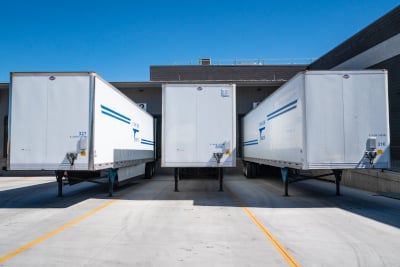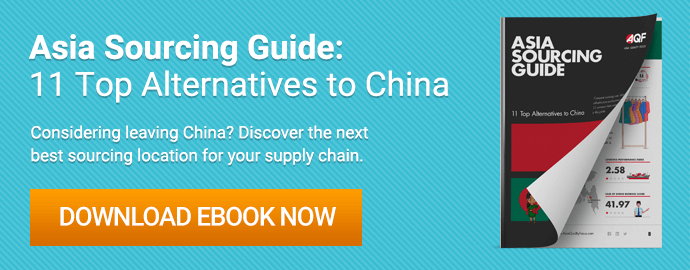 India holds immense potential as a sourcing destination, offering diverse industries, competitive pricing, and a skilled workforce. But it's not without hurdles. From logistical complexities to navigating cultural differences, there are obstacles to overcome. As such, exploring in depth the challenges and opportunities of sourcing from India should help inform your decisions. So, let’s go over some of these aspects to help you navigate sourcing challenges successfully.
India holds immense potential as a sourcing destination, offering diverse industries, competitive pricing, and a skilled workforce. But it's not without hurdles. From logistical complexities to navigating cultural differences, there are obstacles to overcome. As such, exploring in depth the challenges and opportunities of sourcing from India should help inform your decisions. So, let’s go over some of these aspects to help you navigate sourcing challenges successfully.
Why Consider Sourcing from India
The economic factors play a pivotal role here, with India offering cost-effectiveness and competitive pricing in various sectors. Specifically, it has a competitive advantage, with labor costs nearly 70% lower than in many Western countries. In addition, the country’s diverse industries, spanning technology, manufacturing, textiles, and more, cater to a broad spectrum of sourcing needs. For instance, the Indian tech industry has witnessed exponential growth, contributing significantly to the global market.
At the same time, the country's burgeoning market and skilled labor force are key attractions. With a population exceeding 1.3 billion and a rapidly expanding middle class, India presents a thriving consumer base. This growth trajectory is reinforced by a skilled workforce, with approximately 50% of the population under 25 years old. Such advantages make sourcing from this country a strategic and lucrative choice for businesses seeking global procurement opportunities.
burgeoning market and skilled labor force are key attractions. With a population exceeding 1.3 billion and a rapidly expanding middle class, India presents a thriving consumer base. This growth trajectory is reinforced by a skilled workforce, with approximately 50% of the population under 25 years old. Such advantages make sourcing from this country a strategic and lucrative choice for businesses seeking global procurement opportunities.
These notable advantages should not have you rush your decision, however. As we'll see next, there are many challenges and opportunities to consider.
Opportunities
First, having outlined what makes India an appealing option, let’s look at the top three opportunities for sourcing from this country.
Expanding Horizons
For one, sourcing from India offers access to an extensive array of products and services, catering to diverse industry needs. The country's vast market encompasses various sectors, from textiles and apparel to pharmaceuticals, automotive parts, and software development. For instance, India is a prominent player in the global textile industry, offering a great variety of fabrics, garments, and accessories. Moreover, the country's robust manufacturing capabilities ensure the availability of quality products at competitive prices. Also, the service industry provides a spectrum of innovative solutions and expertise, especially in IT and software development.
Technological Advancements
In addition, the country’s technological advancements present a compelling opportunity for sourcing. Specifically, it has significantly contributed to making India one of the top 5 sourcing countries in Asia. The country has emerged as a global tech hub, renowned for its IT services, software development, and innovation. Indian tech companies and professionals are at the  forefront of cutting-edge technologies like artificial intelligence, blockchain, and data analytics. For instance, the software industry is a powerhouse, offering customized solutions and expertise across various domains. Therefore, access to these technological advancements ensures quality products. As it does, it opens doors to innovative solutions and expertise, giving businesses a competitive edge in the global market.
forefront of cutting-edge technologies like artificial intelligence, blockchain, and data analytics. For instance, the software industry is a powerhouse, offering customized solutions and expertise across various domains. Therefore, access to these technological advancements ensures quality products. As it does, it opens doors to innovative solutions and expertise, giving businesses a competitive edge in the global market.
Innovation Ecosystem
And third, India's innovation ecosystem offers an exciting opportunity for sourcing. The country has witnessed a surge in startups and entrepreneurial ventures across diverse sectors. These startups bring fresh ideas and innovative solutions to the market, fostering a culture of creativity and disruption. For instance, in the technology sector, numerous startups focus on developing cutting-edge applications, software solutions, and technological advancements. Moreover, innovation extends to fields like healthcare, agriculture, and renewable energy, where startups introduce novel approaches and products. This supportive environment for startups and access to venture capital and incubation programs fuels this ecosystem. As a result, businesses can benefit from the dynamic and pioneering solutions emerging from this thriving innovation culture.
Challenges
Now that you know the opportunities, it’s time to look at some of the main challenges.
Logistical Hurdles
First, logistical hurdles in India encompass infrastructure and transportation challenges. The country faces issues with inadequate transportation infrastructure, leading to delays and inefficiencies in moving goods. Roads and ports often experience congestion, impacting the timely movement of products.
Second, disparities in infrastructure development between urban and rural areas add complexity to sourcing logistics. While major cities might have better infrastructure, reaching remote or less-developed regions can pose challenges.
In addition, inconsistent quality standards in transportation infrastructure further complicate the logistics process. These logistical  hurdles can result in increased lead times, higher transportation costs, and difficulty ensuring smooth supply chain operations.
hurdles can result in increased lead times, higher transportation costs, and difficulty ensuring smooth supply chain operations.
Navigating these challenges requires a thorough understanding of regional disparities in infrastructure and strategic planning. At the same time, partnering up with reliable foreign logistics providers is highly recommended. A prime example here is Four Winds KSA. This company has over 40 years of experience in the logistics industry and represents a benchmark for other such companies in Saudi Arabia. Thus, they can easily organize your goods' transportation by sea or air and ensure they arrive on time.
Cultural Differences
Second, cultural differences in India can pose challenges in communication and business practices. Variations in communication styles, including indirect communication and hierarchical structures, might lead to misunderstandings between international businesses and local partners.
Moreover, differing business etiquettes and negotiation approaches, influenced by cultural norms, can affect deal-making and collaboration. For instance, decision-making processes in India often involve consensus-building and relationship-oriented approaches, which might contrast with more direct and swift decision-making styles in other cultures.
Therefore, understanding and navigating diverse cultural nuances, such as religious customs or regional practices, become crucial for effective business relationships. Bridging these cultural gaps requires cultural sensitivity, adaptability, and investing time in building strong relationships to navigate such complexities.
Quality Control
While there are ample benefits to outsourcing quality control, it also comes with challenges. Ensuring consistent product quality can be hindered by various factors, including differences in quality standards and variations in production processes across different regions or suppliers. Lack of standardized quality assurance measures across the supply chain can lead to inconsistencies in product quality.
 Moreover, challenges in monitoring and supervising production processes, especially for businesses operating remotely, can affect the ability to maintain desired quality levels. Factors like inadequate infrastructure and varying levels of technological adoption can further complicate efforts to ensure consistent product quality.
Moreover, challenges in monitoring and supervising production processes, especially for businesses operating remotely, can affect the ability to maintain desired quality levels. Factors like inadequate infrastructure and varying levels of technological adoption can further complicate efforts to ensure consistent product quality.
Addressing these challenges requires implementing stringent quality control protocols and establishing clear quality specifications. Fostering closer relationships with suppliers and conducting regular inspections to uphold consistent quality standards also hold immense value.
How to Navigate Sourcing from this Country
Evidently, navigating sourcing from this country demands a strategic approach:
- Partnerships and Relationships: Building strong ties and partnerships with local suppliers and vendors is crucial. Cultivating relationships fosters trust, facilitates smoother communication, and helps understand local business practices and cultural nuances.
- Understanding Regulations: Navigating India's legal and regulatory frameworks is essential. Thus, familiarizing yourself with import/export laws, tax regulations, and compliance standards is imperative to avoid pitfalls and ensure smooth operations.
- Quality Assurance Strategies: Implementing robust quality assurance strategies is key to ensuring consistent product quality. That involves setting clear quality standards, conducting regular inspections, and working closely with suppliers to maintain and improve product standards.
Conclusion
In conclusion, exploring the challenges and opportunities of sourcing from India unveils a dynamic landscape for global businesses. The country's diverse industries, competitive pricing, and skilled workforce present enticing prospects for sourcing. However, logistical hurdles, cultural differences, and maintaining consistent quality pose significant challenges. So, the key lies in navigating the challenges successfully. In doing so, businesses can unlock immense opportunities for growth and success.







